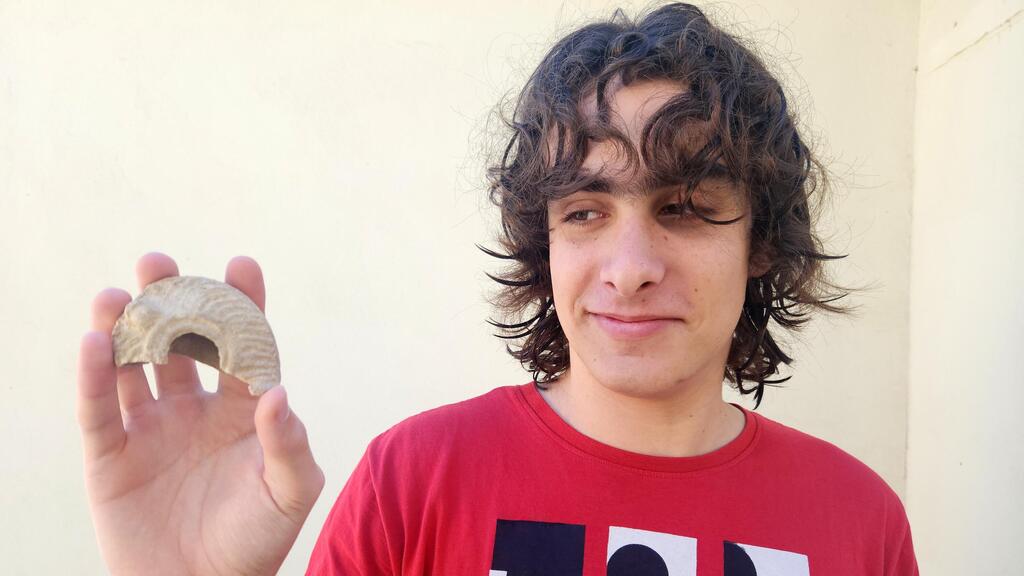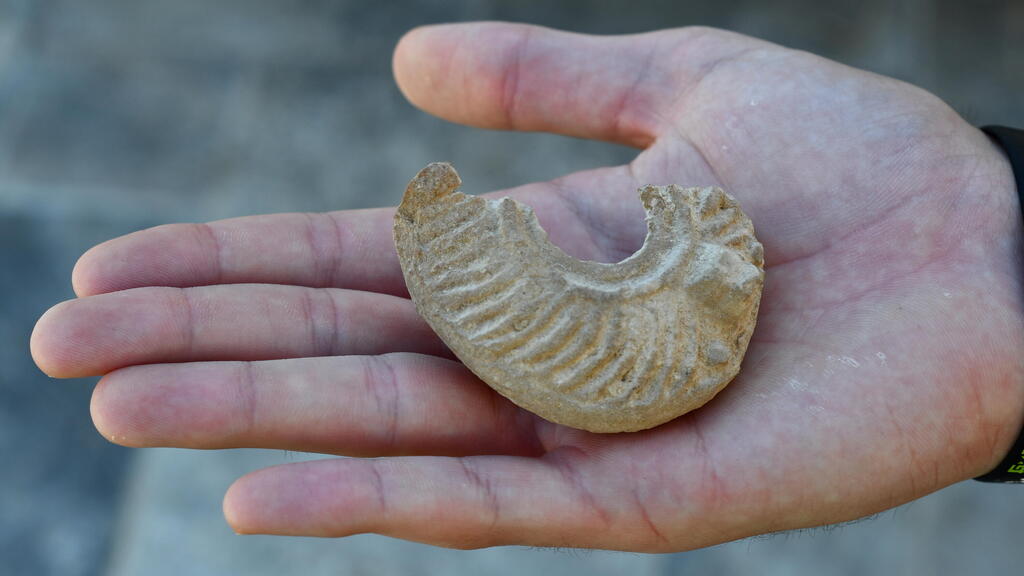Getting your Trinity Audio player ready...
Yonatan Frankel, 16, a student at Tamar high school in Hod Hasharon, went with his class about two weeks ago on an annual trip to Ma’ale Akravim in the south. When the class stopped for a long lunch break near Late Roman Period fort of Mezad Tzafir, he picked up stones from the sand to examine them.
"One of the stones I picked up was full of soil. I shook it, when suddenly I saw that a pattern appeared on it. Then, I realized that it was a shaped object and not a simple stone," he said.
Yonatan gave the lamp to the teacher and she passed it on to their guide, who made sure that it was transferred to the Sub-district Archaeologist of the Israel Antiquities Authority’s Southern Negev District, Alex Freiberg.
2 View gallery


Yonatan Frankel with the ancient oil lamp he discovered on a class trip
(Photo: Yoli Schwartz, Israel Antiquities Authority)
Yonatan received a certificate of merit for his discovery and for good citizenship.
The oil lamp discovered in Mezad Tzafir was produced in Petra in Jordan in the 4th-5th centuries CE. When IAA senior researcher Dr. Tali Erickson-Gini saw the lamp, which was only partially intact, she was quite excited.
“Lamps of this type were uncovered at Mezad Hazeva, and also at Mamshit, Mezad Yotvata and Petra, but the lamp Yonatan found is identical to one discovered in the same place 90 years ago by archaeologist Nelson Glueck,” she said.
2 View gallery


The 1600-year-old lamp used to light the fort
(Photo: Yoli Schwartz, Israel Antiquities Authority)
“We know that between the Nabataean-Roman town of Mamshit and the copper mines of Feinan (biblical Punon) in the Central Arava – not far from present-day Moshav ‘En Yahav, a trade route was in use in the 4th-6th centuries CE. In order to secure the shipments of copper, and possibly even gold from the mines, a series of forts were built between the head of the Scorpions Ascent and Mezad Hazeva, and Mezad Tsafir was one of these. Mounted patrols guarded the important road. It is easy to imagine the lamp lighting up the darkness in the lonely, isolated fort manned by Roman soldiers," Erickson-Gini added.
I wish to thank Yonatan for his good citizenship,” said Eli Escusido, the Director of the Israel Antiquities Authority. “Every object that is turned over to us is kept by the National Treasures department and each object can shed significant light (as is indeed the case here) about our past.”

